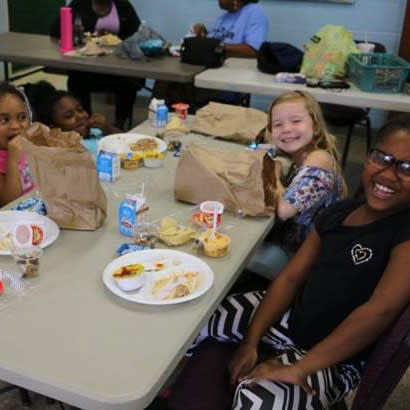
For many children, the end of the school day also means losing access to the nutritious school meals they rely on to remain engaged and well-nourished. Fortunately, the Afterschool Nutrition Programs — which include the Child and Adult Care Food Program and the National School Lunch Program — connect children to the food they need while also drawing them into a safe afterschool environment where they can learn, socialize and be active.
The Food Research & Action Center (FRAC) recently released its report Afterschool Suppers: A Snapshot of Participation, which looks at participation data in the Afterschool Nutrition Programs.The report finds that in October 2016:
- Nearly 1.1 million children received an afterschool supper, up from just 200,000 in October 2011;
- Nearly 1.6 million children received an afterschool snack;
- More than 44,000 afterschool programs provided a meal, a snack, or both.
Thanks to the commitment and leadership of key champions like local park and recreation agencies, more children than ever before are accessing healthy afterschool snacks and suppers.In fact, over 57 percent of local park and recreation agencies provide meals and snacks at their out-of-school time sites, ensuring that kids have access to healthy foods along with enrichment activities, opportunities to be physically active and engage socially with peers.However, much work is still needed to fill the afterschool nutrition gap. Overall, only one child for every 20 low-income children who participated in school lunch in October 2016 received an afterschool supper.
The most effective way to connect more children to the Afterschool Nutrition Programs is to ensure that there are enough programs offering afterschool activities in low-income communities. This requires more public and private funding for afterschool programs, including maintaining existing funding streams, such as the 21st Century Community Learning Centers program, and investing additional dollars at federal, state and local levels. Afterschool programs provide an essential foundation for the Afterschool Nutrition Programs.
Other best practices for increasing participation detailed in the report include encouraging eligible afterschool programs to maximize impact by providing suppers instead of or in addition to snacks, recruiting more school districts to provide meals, improving the quality and appeal of meals through farm to school and similar efforts, and serving meals during weekends, holidays and school closures.
Now is the time to amplify expansion efforts, and parks and recreation agencies have an important role to play. Take advantage of FRAC’s resources and research to increase afterschool meals participation and register for upcoming calls and webinars.
Learn more about closing the afterschool hunger gap in Afterschool Suppers: A Snapshot of Participation.
Interested in learning more about the 21st Century Community Learning Center program? Email NRPA’s Senior Government Affairs Manager, Kate Clabaugh.
Clarissa Hayes is a Child Nutrition Policy Analyst for the Food Research and Action Center (FRAC).

